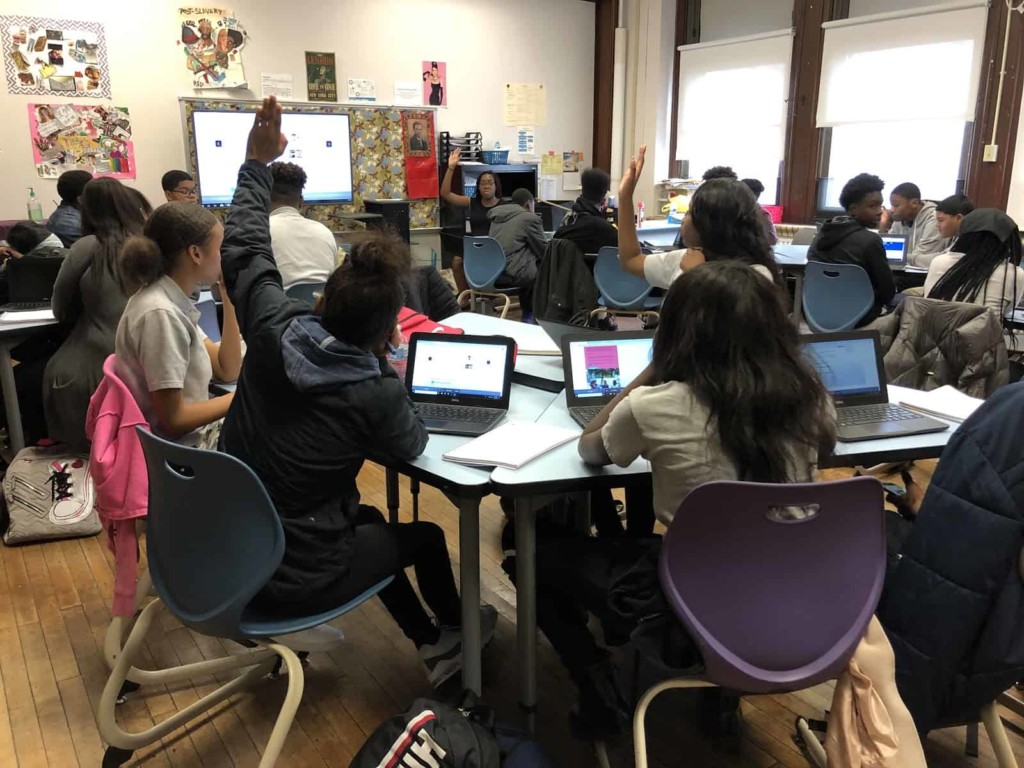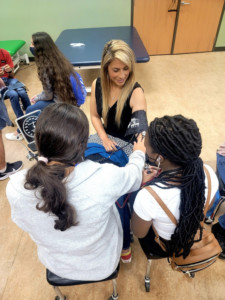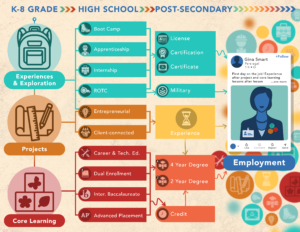Diploma Networks: A New Way to Help Schools Adopt Broader Outcomes and Next-Gen Learning Models

Standards-based reforms of the last 25 years stressed grade-level proficiency in basic skills. Recognizing that success in life requires more than basic literacy and numeracy, many schools are defining and adopting broader measures of student success and building personalized learning supports to help students achieve them. These supports include transparent systems to track progress across academic and non-academic competencies, more opportunities for choice and voice, real-world, applied learning experiences, and intentionally designed structures and schedules to nurture deep relationships. Diploma Networks offer schools and districts a promising solution to move in this direction.
Diploma networks share goals, systems and supports:
- Goals: A common definition of success and shared approach to assessing learning and measuring progress for learners and schools (new graduation requirements, school success metrics that go well beyond standardized tests, etc.);
- Systems: A learning model with signature experiences and shared tools that support student learning and the transparent tracking of student progress towards graduation; and
- Supports: Integrated resources and implementation support for new and existing schools adopting the model.
International Baccalaureate is an example of a diploma option available to motivated students. With the 10 elements of the learner profile and the curriculum requirements, IB represents a comprehensive outcome framework but is short of a schoolwide model with strong systems and supports.
Diploma networks that share goals, systems and supports on a schoolwide basis have the opportunity to extend deeper, authentic learning experiences that prepare youth for contribution in college, careers and citizenship. As schoolwide models with strong supports, they also have the opportunity to extend equitable outcomes. By organizing around a common set of goals and using the same systems, supports and vocabulary, schools can seamlessly participate in improvement networks that will guide and improve practice over time.
Building 21 is an example of a diploma network with shared goals, systems and supports (what NewSchools Venture Fund calls a Model Provider). Another example is the Place Network, sponsored by Teton Science School, an affiliation of rural microschools.
Most diploma networks will charge membership fees for coaching services and digital resources. Examples of commitments and benefits follow.
Goals
These emerging Diploma Networks share common student success and outcome frameworks such as the XQ Learner Goals or MyWays from NGLC. These next-generation student success measures cannot be assessed simply through traditional standardized tests or siloed academic grades. As a result, diploma networks will utilize more comprehensive and balanced assessment systems that require students to demonstrate mastery of critical academic and non-academic competencies, mindsets and skills.
Rather than a minimum number of traditional course credits, diploma networks are moving to a more robust, competency-based set of graduation requirements that entail signature experiences– compelling, real-world performance tasks that push students to offer evidence of learning outcomes. For example:
- Publish 20 reviews (or original works), half in science, half in the humanities (individual).
- Publish two major works: papers, books and/or sites (as a team). Topics could include the implications of artificial intelligence, a proposed solution to a health challenge, or a strategy to extend social justice.
- Produce and present two works of public art (as a team).
- Plan and launch a business or sustainable initiative with a web presence; secure and serve a customer.
- Demonstrate success on workplace competencies in two work settings.
- Visit two of the world’s greatest cities (at least one international) and compare approaches to sustainability.
- Gather and analyze data to address a local problem, prototype a solution.
- Complete at least two college courses (one could be online).
- Apply to a valuable postsecondary experience.
- Create a post-secondary plan for life after high school.
- Develop and present a plan and budget for life at age 25.
Requiring students to demonstrate mastery of academic and nonacademic skills and competencies multiple times in multiple contexts while also requiring them to complete several signature experiences along the way promotes deeper learning and reduces the likelihood of students racing through a checklist of competencies. Experiences are specific enough to promote desired learning outcomes while flexible enough for school communities and individual learners to exercise voice and choice.
Some diploma networks will support the development of comprehensive learner profiles (a comprehensive record of growth and demonstrated capability), a transcript (a summary of achievement) and a portfolio (artifacts of personal bests).
Schools that are members of diploma networks will also have to meet state graduation requirements (typically expressed as credit requirements but increasingly as competencies).
Systems
Diploma networks will likely share a personalized and competency-based learning model including goals (above) and:
- Learning resources: units of study, personalized learning applications and project authoring tools linked to the outcome framework on a learning platform with opportunities to contribute to the network.
- Competency systems: a complete set of competencies, assessments, and learning
progressions aligned with a graduate profile, and a policy guide for promotion and graduation. - Administrative tools: may include a student information system, LMS, data systems, structures and schedules, human resource and finance systems.
Supports
Diploma networks support new and transformed schools with:
- Planning: scope and goals; budget and resources; sequencing and timelines;
- Policy decisions, scheduling and crediting;
- Talent development system including a system of microcredentials or teacher competencies;
- Role descriptions, hiring and onboarding strategies;
- Change management;
- Network collaboration opportunities;
- Coaching teachers and administrators around design and implementation of deeper learning experiences;
- Navigating state and district policies; and
- On-site and online coaching.
Incentives
Schools require incentives to join diploma networks. The primary value proposition will be an easier pathway to implementing personalized and competency-based learning than going it alone. Network goals, systems and supports create sources of value compared to do-it-yourself approaches.
States could reduce (and eventually eliminate) summative testing requirements for member schools of networks with assessments systems proven valid and reliable.
Over time, diploma network transcripts and portfolios will become widely recognized and valued for admissions by postsecondary institutions and for hiring priority by employers.
Grants for schools joining diploma networks could help to subsidize the change costs and membership fees.
Conclusions
By reducing complexity and increasing supports, diploma networks will offer schools a promising approach to adopting new outcome frameworks and learning models. For students, diploma networks will offer rich learning experiences and priority access into postsecondary and early employment. Comments and suggestions on this proposal are welcome below.
For more, see:
- Better Together: How to Leverage School Networks for Smarter Personalized and Project Based Learning
- Better Together: Why Schools Should Work in Networks (podcast with Lydia Dobyns)
- Building 21: Designing a Network for Competency-Based Education
Stay in-the-know with innovations in learning by signing up for the weekly Smart Update.
This post was originally published on Forbes and includes mentions of a Getting Smart partner. For a full list of partners, affiliate organizations and all other disclosures, please see our Partner page.





0 Comments
Leave a Comment
Your email address will not be published. All fields are required.